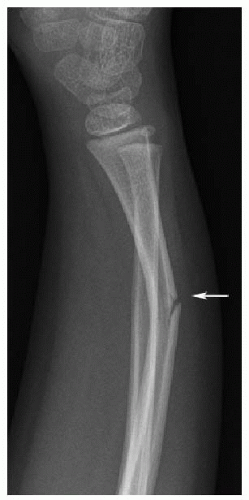

#GREENSTICK FRACTURE DISTAL RADIUS HOW TO#
If you had a very bad break, surgery may be carried out to fix broken bones back into place.īefore leaving hospital, you'll be given painkillers to take home and advice on how to look after your cast. 1 They typically occur in children up to age 14, usually after a low energy fall. You'll be given medicine before this happens so you will not feel any pain. Torus (buckle) fractures are the most common fractures of the wrist in children, involving the distal radius and/or ulna bone ( fig 1 ). You may be given a sling to support your arm.Ī doctor may try to fit the broken bones back into place with their hands before applying a splint or cast. Sometimes this may be done a few days later to allow any swelling to go down first.

You will also be given painkilling medicines for the pain.Īn X-ray is then used to see if there is a break and how bad that break is.Ī plaster cast can be used to keep your arm in place until it heals. When you get to hospital the affected arm will be placed in a splint to support it and stop any broken bones from moving out of position. Treatment of radial head fractures depends on the specific characteristics of the fracture using the Mason classification.The St John Ambulance website has information about how to make an arm sling Treatment for a broken arm or wrist Radial head fractures may be difficult to visualize on initial imaging but should be suspected when there are limitations of elbow extension and supination following trauma. Combined fractures involving both the ulna and radius generally require surgical correction.

She was seen in an academic pediatric emergency department one week ago. These fractures are treated with immobilization or surgery, depending on the degree of displacement and angulation. Date: 13 January 2013 Case Scenario: A nine-year-old girl playing ringette slipped on ice and hurt her right, dominant wrist. Isolated midshaft ulna (nightstick) fractures are often caused by a direct blow to the forearm. It should be noted that these fractures may be complicated by a median nerve injury. A nondisplaced, or minimally displaced, distal radius fracture is initially treated with a sugar-tong splint, followed by a short-arm cast for a minimum of three weeks. It is a break that occurs where the long radius bone in the forearm meets the wrist. In adults, distal radius fractures are the most common forearm fractures and are typically caused by a fall onto an outstretched hand. A distal radius fracture is the most common type of broken wrist. Depending on the degree of angulation, buckle and greenstick fractures can be managed with immobilization. Greenstick fractures, which have cortical disruption, are also common in children. Incomplete compression fractures without cortical disruption, called buckle (torus) fractures, are common in children. If initial imaging findings are negative and suspicion of fracture remains, splinting and repeat radiography in seven to 14 days should be performed. Evaluation with radiography or ultrasonography usually can confirm the diagnosis. A fall onto an outstretched hand is the most common mechanism of injury for fractures of the radius and ulna. Fractures of the radius and ulna are the most common fractures of the upper extremity, with distal fractures occurring more often than proximal fractures.


 0 kommentar(er)
0 kommentar(er)
